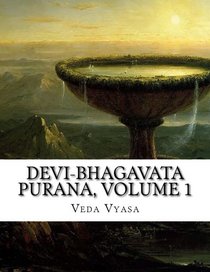Search -
Devi-Bhagavata Purana, Volume 1
DeviBhagavata Purana Volume 1
Author:
Devi-Bhagavata Purana, also known as the Shrimad Devi Bhagvatam, the Devi Bhagavatam, is one of the most important works in Shaktism, a branch of Hinduism focusing on the veneration of the divine feminine, along with the Devi Mahatmya. Also, the Devi-Bhagavata Purana claims itself as a Maha Purana ("Great Purana"). The Devi-Bhagavata Purana has ... more »
Author:
Devi-Bhagavata Purana, also known as the Shrimad Devi Bhagvatam, the Devi Bhagavatam, is one of the most important works in Shaktism, a branch of Hinduism focusing on the veneration of the divine feminine, along with the Devi Mahatmya. Also, the Devi-Bhagavata Purana claims itself as a Maha Purana ("Great Purana"). The Devi-Bhagavata Purana has ... more »
ISBN-13: 9781514218419
ISBN-10: 1514218410
Publication Date: 6/4/2015
Pages: 350
Rating: ?
ISBN-10: 1514218410
Publication Date: 6/4/2015
Pages: 350
Rating: ?
0 stars, based on 0 rating
Publisher: CreateSpace Independent Publishing Platform
Book Type: Paperback
Members Wishing: 0
Reviews: Amazon | Write a Review
Book Type: Paperback
Members Wishing: 0
Reviews: Amazon | Write a Review
Genres:




